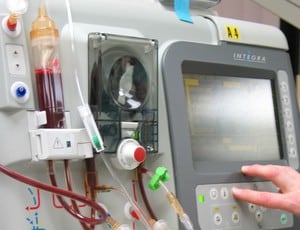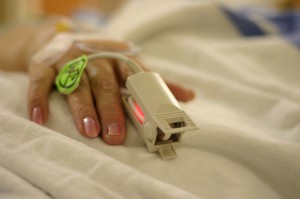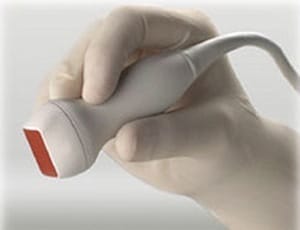COVID-19 and infusion pump location

“Based on a low level of risk, a procedure was developed to direct clinicians as to when this process is appropriate during a national crisis” Hagle et al (2021).
Midline catheter placement

“Successful midline catheter programs require robust surveillance plans to monitor for appropriateness of use and complications, including bloodstream infections” Keleekai-Brapoh et al (2021).
Catheter lock solutions for reducing CRBSI

“The study showed that taurolidine lock solution seemed to be the most effective for the prevention of CRBSI in pediatric patients” Guo et al (2021).
Elastomeric pump connection study – Full Text

“An analysis of patients from an outpatient parenteral antimicrobial therapy program is presented in which elastomeric pumps had failed to flow due to incomplete tightening of Luer lock needleless connections” Liu et al (2021).
Tunneled dialysis catheter dysfunction model

“The described model represents a reliable and reproducible large animal model of catheter dysfunction and bloodstream infection, which recreates all the main complications of TDC’s and so could be used as a validated large animal model to develop new therapies for TDC related infection, thrombosis/dysfunction and central venous stenosis” Celdran-Bonafonte et al (2021).
IV access for thoracic computed tomographic angiography

“Satisfactory aortic attenuation achieved with non-antecubital IVA is equivalent to attenuation achieved with antecubital IVA for T-CTA imaging” Winkler et al (2021).
CLABSI prevention education

“Statistical significance was found in all studies (except one) in terms of CLABSI reduction despite the large variation of the length or the type of the educational intervention” Foka et al (2021).
Midclavicular catheter outcomes

“Midclavicular catheters are associated with a high rate of insertion success and low rates of adverse events and unplanned removal” Tomás-López et al (2021).
Arterial catheters in COVID-19 patients – Full Text

“During the pandemic we observed a substantially higher rate of positive blood cultures with coagulase negative staphylococci (CoNS) in ICU patients” Erlangga et al (2021).
Preventing infusion reactions

“In the overall population (N = 34) and an elderly subgroup (n = 21), IV cetirizine was as effective as IV diphenhydramine in preventing infusion reactions (primary outcome) and associated with less sedation at all time points, a shorter infusion center stay, and fewer treatment-related adverse events” Holmes et al (2021).
IV fluid rates for ICU patients

“Among patients in the intensive care unit requiring fluid challenges, infusing at a slower rate compared with a faster rate did not reduce 90-day mortality” Zampieri et al (2021).
Peripheral parenteral nutrition

“is a safe, effective way to deliver supplemental protein, energy, and micronutrients to malnourished patients and supports transition to other modes of nutrition care” Rubino et al (2021).
UEDVT common confounding factors

“Underlying malignancy, presence of PICC line, and cardiovascular co-morbidities were identified as common confounding factors” Kastora et al (2021).
3D-printed reusable US PIVC phantom – Full Text

“We developed a 3D-printed reusable US-PIVC phantom, and it proved to be more economical without sacrificing the realism and time required for US-PIVC placement when compared to a commercial phantom” Tan et al (2021).
Suicidal air embolism in hospital

“We present an unusual case of a suicidal gas embolism, in which a man in hospital connected a tube supplying oxygen to a venous catheter” Böckers et al (2021).
Newborn PICC line

“To compare polyurethane and silicone peripherally inserted central catheters (PICCs) in newborns regarding the success rates of insertion and duration and the reasons for nonelective removal” Gomes de Souza et al (2021).
Peripheral IV catheter policy adherence

“Discrepancies between evidence-based guidelines and local policy in clinical practice were identified including high rates of PIVC insertion in points of flexion and poor documentation” Berger et al (2021).
Pediatric peripheral IV catheter dwell time

“Moreover, phlebitis represented the independent risk factor that influencing the indwelling time of pediatric peripheral intravenous catheter” Peng and Zhou (2021).
Routine versus clinically indicated replacement of peripheral IV – Full Text

“The results of this cohort study using a large, prospective surveillance database suggest that replacement of PVCs only when clinically indicated may be associated with an increased risk of PVC-BSI compared with routine replacement” Buetti et al (2021).
Pediatric home parenteral nutrition in France

“This study aims to review the data involving children on HPN over a 6-years period in France to outline the global and continuous improvement in care” Goulet et al (2021).
Sedation for CVC insertion

“For central venous access device procedures under monitored anesthesia care, remifentanil use in both infusion and bolus techniques could provide sufficient sedation and analgesia without serious adverse effects” Sagiroglu et al (2021).
Ultrasound-guided peripheral IV catheter insertion

“The use of simulation-based mastery associated with USGPIVs, demonstrated lower failure rates than standard PIVs after 2 days and USGPIVs exhibited improved survival rates in patients with DIVA” Feinsmith et al (2021).
CVC accidental knotting

“The aim of this study is to report a case of a simple tight knot 2 cm from the catheter tip” Facanali et al (2021).
Central line bundle implementation – Full Text

“However, some factors related to bundle compliance and measurement remain unaddressed, including harder to change socio-cultural factors likely important to sustainability of the CLABSI reductions and fostering further improvements across a broader safety agenda” Goldman et al (2021).
Closed-system-transfer device benefits

“The use of Qimono® appears to significantly reduce 5-FU contamination when disconnecting infusion lines of an elastomeric pump unlike NFC and standard Luer lock” Raphaëlle et al (2021).
Arterial catheterisation in critically ill patients

Arterial catheterisation in critically ill patients Abstract: Introduction: The use of peripheral indwelling arterial catheter for haemodynamic monitoring is widespread in the intensive care unit and is recommended in patients with shock. However, there is no evidence that the arterial catheter could improve patient’s outcome, whereas the burden of morbidity generated is significant (pain, thrombosis, […]
Sherlock 3CG tip confirmation and ventricular assist device

“The VAD significantly led to magnetic tracking system failure due to its electromagnetic interference during Sherlock 3CG insertion and significantly reduced the success rate of PICC insertions in the optimal position” Takakura et al (2021).
PICC complication risk factors

“Women and obese patients require careful monitoring of their PICC” Ban et al (2021).
CVC training model simulates blood flow – Full text

“Our novel simulation model is useful and realistic for ultrasound-guided central venous catheter insertion training” Lee et al (2021).
Hypertonic saline for hyponatremia

“The authors conclude by offering some practical recommendations for the use of hypertonic saline” Rondon-Berrios and Sterns (2021).

